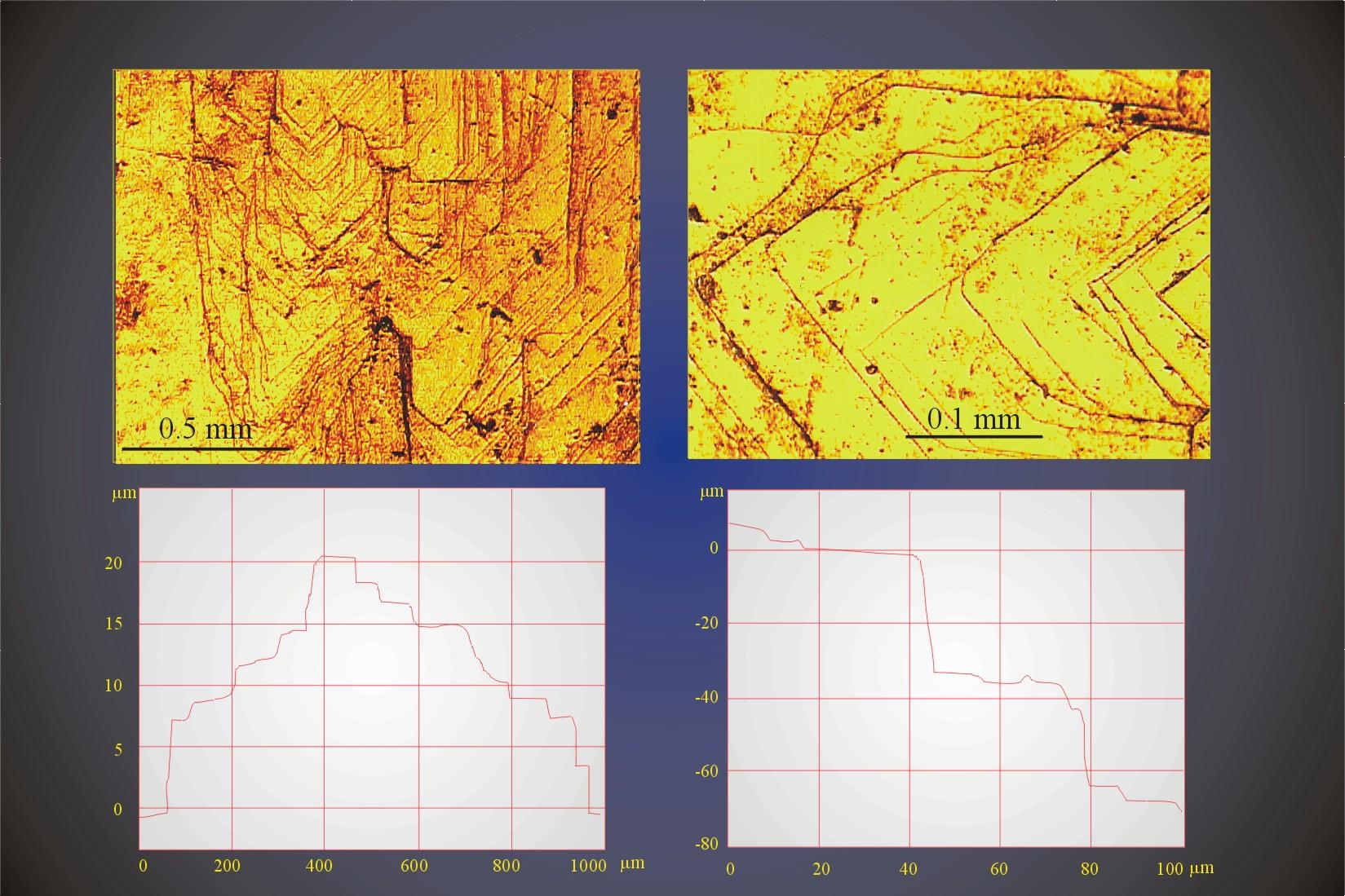GROWTH MORPHOLOGIES ON PYRITE SURFACES
.
Liane G. Benning1,*,
A. L. Owsley2, and H. L. Barnes1
1Pennsylvania State University,
Department of Geosciences, University Park, PA 16802 USA
(*present address: School of Earth Sciences, University
of Leeds, Leeds LS2 9JT UK; liane@earth.leeds.ac.uk),
2Geology and Geophysics,
Yale University, New Haven, CT 06520, USA,
Surfaces
of natural pyrite crystals have been extensively studied and an intrinsic
dependence of their structure on morphology and growth mechanisms has been
demonstrated. Apparently, the main factors controlling crystal morphology
and growth are supersaturation, temperature, and, incorporated impurities.
At conditions close to equilibrium, spiral growth dominates the growth
rate, while at higher supersaturation, two-dimensional nucleation on pre-existing
surfaces controls the growth mechanism. Technological advancements
(e.g., development of special phase-contrast interferometry, scanning tunneling-
and atomic force- microscopy) have improved the resolution of surface structure
measurements. Although intensive studies on surface structures of
natural pyrite have been carried out, in situ growth experiments have been
lacking. For various other minerals experimentally grown from solution,
in-situ growth rates (R), hillock slopes (p) and step advancing rates (v)
have been measured as a function of known saturation state (s) and, in
general, a linear relation between R, p, v, and (s) has been established.
Evaluating these parameters on natural samples makes this function much
less tractable because saturation states are unknown. However, surface
topography permits the precise measurement of step height / width and slopes
of spiral hillocks. Therefore, in this study, striation densities,
step dimensions and hillock slopes for the {100} face of pyrite have been
measured in an attempt to further explore pyrite growth mechanism.
Macroscopic
smooth pyrite crystals from Navajun, Spain, were initially studied using
Scanning Electron Microscopy (SEM, Phillips, SX-20) and a thorough surface
survey (including relative height and width measurements) revealed a dual
distribution of the height and width of striations for cubic {100} faces.
To numerically assess hillock slopes, topographic and higher resolution
techniques were required. Therefore, several samples, were evaluated
on a 10-1000 mm scale with a Surface Profilometer (SP, Alpha-500, Tencor)
(Fig. 1) and on a micro to nano scale with an Atomic Force Microscope (AFM,
DI-3100) (Fig. 2). The measurements of step height, width, and angle
of profiles traces taken over hillocks were used to calculate the hillock
slopes (p). Neighboring hillock growth - centers caused the growth
of asymmetric pyramids with slopes differing by a factor of 2-7 on the
two sides. On the other hand, elongated pyramids indicate highly
anisotropic growth conditions, and the slopes vary by a factor of up to
10. An estimate of growth rates requires an independent estimate
of the saturation state. Additional measurements are in progress,
both to improve methods of characterizing the shapes of pyrite surfaces
and to better understand the causes that produce these shapes.

Fig. 1. Phase contrast microphotographs
with the profilometer traces of growth hillocks on pyrite crystals from
Navajun (Spain).
Fig. 2. AFM trace on the rise of a hillock
on a {100} face.

In: LPI Contribution No. 971, p. 25-26, Lunar and Planetary
Institut, Houston, 1999
![]()